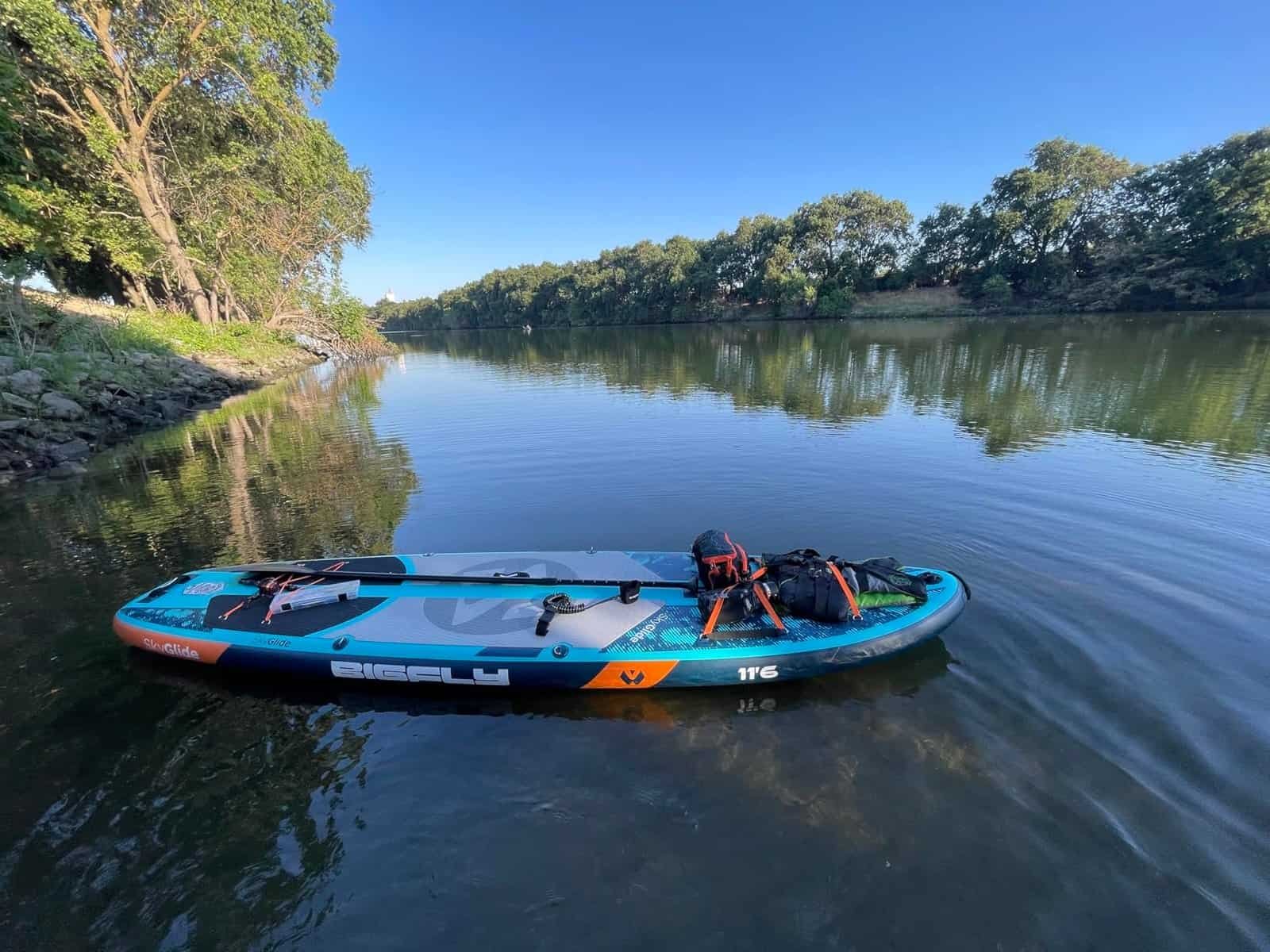The Pros and Cons of Different Stand-Up Paddle Board Materials
Stand-up paddle boarding (SUP) has grown in popularity, and selecting the right board can greatly impact your experience. Among the key factors to consider are the materials used in paddle board construction. Each type of material offers distinct advantages and limitations, catering to various paddling needs.

Epoxy Paddle Boards
Epoxy paddle boards are made with a foam core wrapped in fiberglass and epoxy resin.
Advantages:
Performance-Oriented: Their rigid structure provides excellent speed, glide, and maneuverability.
Lightweight: Despite being solid, these boards are relatively easy to handle and transport.
Durable: When properly maintained, epoxy boards can last for many years.
Disadvantages:
Prone to Damage: They are susceptible to dings and cracks if dropped or hit against hard surfaces.
Storage Challenges: Their rigid shape requires ample storage space.
Not Travel-Friendly: Transporting these boards can be cumbersome, especially for long distances.
Plastic Paddle Boards
Plastic paddle boards are constructed from high-density polyethylene (HDPE) or similar materials.
Advantages:
Budget-Friendly: These boards are often the most affordable option.
Highly Durable: Their tough exterior can withstand heavy impacts, making them ideal for beginners or rentals.
Low Maintenance: They require minimal upkeep and are resistant to minor scratches or dents.
Disadvantages:
Heavy: Plastic boards are significantly heavier than other materials, which can make handling more difficult.
Lower Performance: Their design is typically less refined, leading to reduced speed and efficiency on the water.
Less Aesthetic Appeal: Plastic boards often lack the sleek, polished finish of other types.
Wood Paddle Boards
Wood paddle boards, often layered with fiberglass and resin, bring a natural and aesthetic appeal.
Advantages:
Eco-Friendly Option: Many wood boards are sustainably sourced.
Aesthetic Appeal: Their natural wood grain creates a beautiful, timeless design.
Stiffness: They offer good rigidity, enhancing stability and paddling efficiency.
Disadvantages:
Costly: The craftsmanship involved makes them one of the more expensive options.
Heavy: Wooden boards are heavier than their epoxy counterparts, which can be a challenge during transport.
Maintenance Required: Regular care is needed to prevent warping or water damage.
Inflatable Paddle Boards (iSUPs)
Inflatable paddle boards are made of durable PVC layers surrounding an air-filled core, with drop-stitch technology for structural integrity.
Advantages:
Highly Portable: When deflated, they roll up compactly, making transportation and storage effortless.
Durable and Resilient: Quality iSUPs can withstand impacts without damage, making them ideal for rocky or shallow waters.
Lightweight: Inflatable boards are easy to carry, even for kids or smaller paddlers.
Beginner-Friendly: Their softer surface is safer for falls, reducing the risk of injuries.
Why Inflatable Paddle Boards Stand Out
Inflatable paddle boards have revolutionized the SUP industry with their versatility and practicality. They are the perfect solution for paddlers seeking a balance of convenience, performance, and durability. Whether you’re exploring calm lakes, paddling through gentle rivers, or traveling to distant shores, an iSUP adapts to your lifestyle with ease.
For adventurers, beginners, or anyone with limited storage space, inflatable paddle boards are a game-changer, offering a hassle-free way to enjoy the water.





